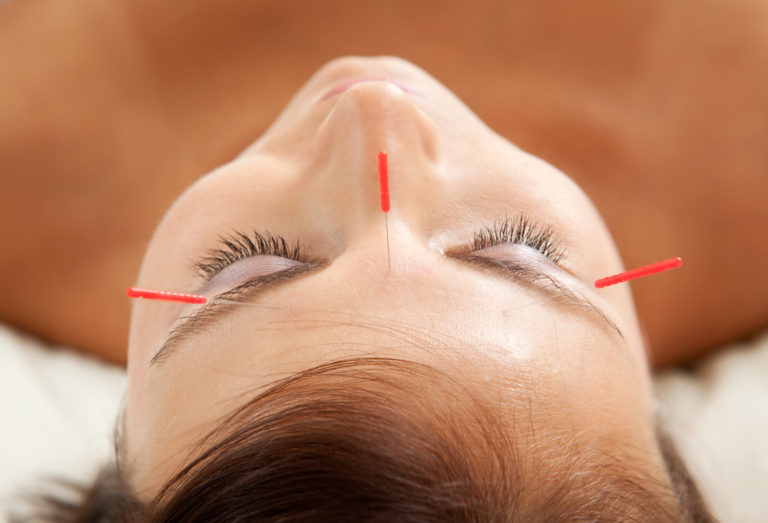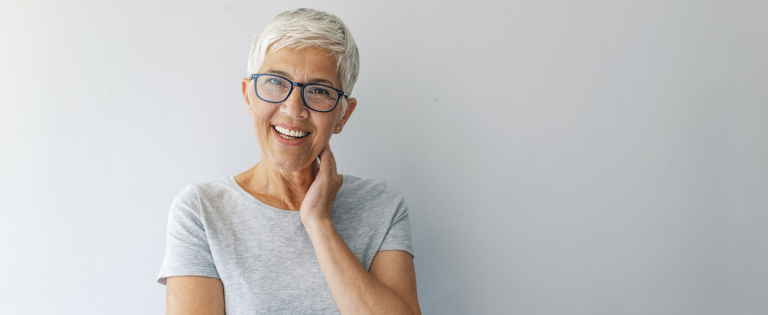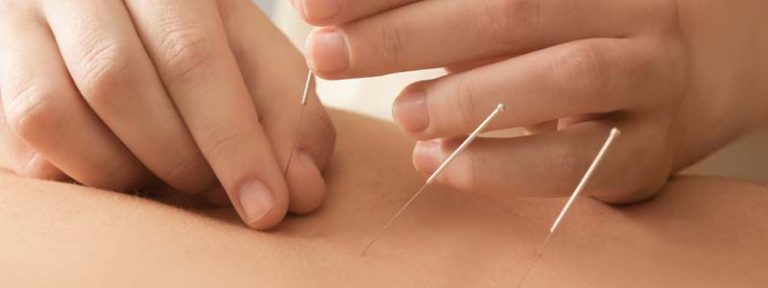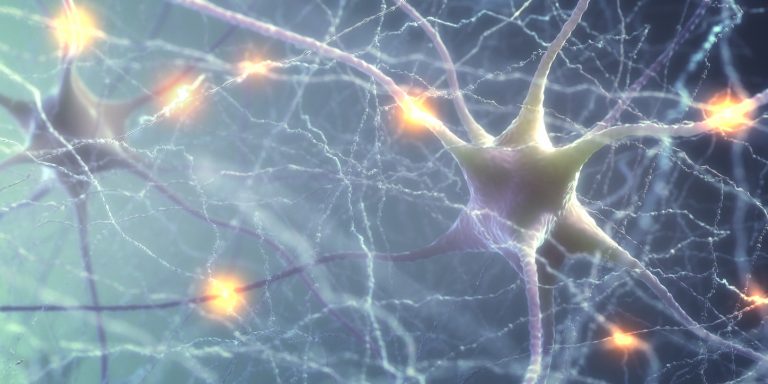Senior Mobility- Troubleshooting Osteoarthritis
By Beth Morrison, L.Ac. DACM
Among geriatric conditions that increase with age is a common chief complaint of knee pain that affects mobility. For the “oldest old”, getting around is the most common problem. “Difficulty doing errands alone and mobility-related limitations are the two most common types of disability for the 90+” (Memmott).
Osteoarthritis (OA) is the most prevalent joint disease and a leading source of chronic pain and disability in the United States.
Key Findings from a 2017 on Seniors with knee pain
Knee OA accounts for more than 80% of the disease’s total burden (Wallace). For the 85+ population, osteoarthritis is the second most common chronic condition and cause of chronic pain and disability (after hypertension). Fifty-two percent of 85-year olds had a diagnosis of osteoarthritis in one study. Since pain management will continue to be a vexing clinical and health policy problem as virtually all analgesics have remarkable risks in older adults, non-pharmacologic treatments can help (Jaul).
Key Causes of Osteoarthritis
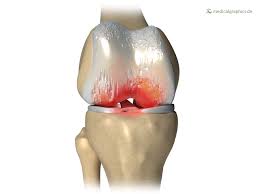
The cause of knee OA includes many factors with injury, obesity, genetics and a history of high-impact activity among them (Shane Anderson).
Often, knee OA pain is worse with movement and use of the joint. As knee OA worsens, the patient loses range of motion and mobility.
The signs and symptoms include: pain with walking, climbing stairs, bending, swelling, limping and insomnia due to pain. There is currently no way to reverse the deterioration of the knee joint so treatment includes ameliorating the symptoms, lifestyle changes and/or surgery with the goal of maintaining the activity level of the patient.
Treatment: Where to Start

Treatment starts with possible weight loss, activity modification, exercises, proper footwear, the use of a cane, knee braces or sleeves.
Pain management includes oral as well as intra-articular pharmacologic options. Joint replacement surgeries are effective and cost-effective for patients with significant symptoms or functional limitations, providing improvements in pain, function, and quality of life (In Papadakis).
A Chinese Medical Perspective: Kidney Qi
According to Chinese medicine, the “oldest old” lack kidney essence since this essential ‘substance’ declines with age. Therefore, the common complaints of old age aren’t a disease as much as a physiological decline of kidney essence. From a Chinese Medical perspective, this decline includes the deficiency of kidney yin, body fluids, yin substance of each organ, essence and blood.
These ‘yin fluids’ contribute to the smooth function of joints. Yin deficiency develops over many years and manifests as dryness, such as a dry mouth, dry skin, or dry eyes. The prolonged yin deficient condition leads a feeling of heat, and thirst.
The yin deficiency tongue of the elderly shows a lack of tongue coating, with possible red tongue body. As for the symptoms of elderly knee OA, a weakness of the limbs may be additionally caused by other more complex diagnoses.
Other organs play a significant role in arthritis as well. The Liver stores the blood and governs tendons. The Kidney stores the essence and governs the bones, and the Spleen governs the transformation, transportation & dominates the muscles (Deadman).
Acupuncture To the Rescue!
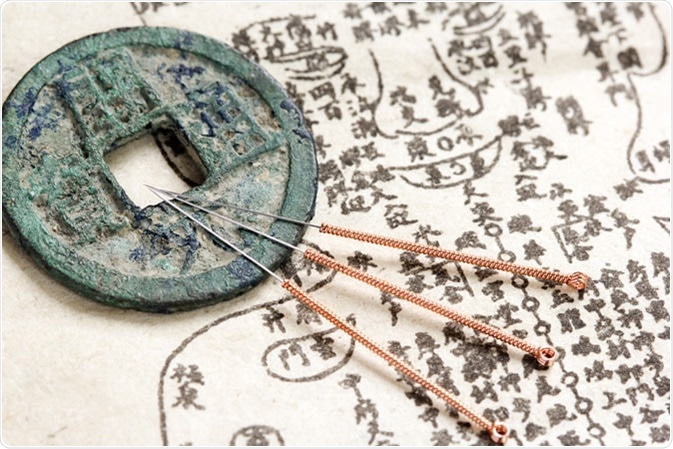
Using acupuncture points, the treatment for chronic knee pain due to osteoarthritis will focus on the deficiencies of older age, especially of yin deficiency. Your acupuncturist will choose points based on your individual constitution.
Treatment Goals May Include:
- Strengthening kidney yin (joint lubrication),
- Supporting spleen qi (muscle and tendon support)
- Tonifying liver blood and to augment the brain
- Electro-acupuncture will focus on tonification as well, and will move increase circulation and reduce pain locally.
- An external liniment will increase the lasting effects of the acupuncture and treat the local knee pain as well.
What Do Scientist Say About Acupuncture?
Research of the effectiveness of acupuncture in treating the pain of knee osteoarthritis revealed many studies with positive results.
- In one study published in 1999, 73 patients received either standard care or acupuncture, it was concluded that acupuncture is an effective and safe adjunctive therapy to conventional care for patients with OA of the knee (BM Berman). Another Berman study of 2004 showed that acupuncture seems to provide improvement in function and pain relief as an adjunctive therapy for osteoarthritis of the knee when compared with credible sham acupuncture and education control groups.
- Regarding electroacupuncture, a study showed that two weeks of repeated applications of transcutaneous electrical nerve stimulation at 2 Hz, 100 Hz or 2/100 Hz produced similar treatment effects for people suffering from osteoarthritic knee (Law).
In Conclusion
Since knee osteoarthritis can not be reversed or cured, the treatment goals for elderly patients with KOA include maintaining mobility, decreasing pain, monitoring overall health, providing post operative healing in the event of joint replacement surgery as well as social support.
A study from 2007 on “Depression, Social Support, and Quality of Life in Older Adults With Osteoarthritis” showed that social support appeared to play an important role in moderating the effects of pain, functional limitation, and depression on these subjects’ quality of life (Blixen).
Next Steps
- Read a Recent study on acupuncture for osteoarthritis here.
- Find an acupuncturist in your area.
- Consider implementing a program that involves exercise, strengthening exercises, and an anti-inflammatory diet
- Contact Us to schedule a FREE 15-minute phone consultation.
References
B M Berman, B B Singh, L Lao, P Langenberg, H Li, V Hadhazy, J Bareta, M Hochberg; A randomized trial of acupuncture as an adjunctive therapy in osteoarthritis of the knee., Rheumatology, Volume 38, Issue 4, 1 April 1999, Pages 346–354, https://doi.org/10.1093/rheumatology/38.4.346
Berman BM, Lao L, Langenberg P, Lee WL, Gilpin AM, Hochberg MC. Effectiveness of Acupuncture as Adjunctive Therapy in Osteoarthritis of the Knee: A Randomized, Controlled Trial. Ann Intern Med. ;141:901–910. doi: 10.7326/0003-4819-141-12-200412210-00006
Blixen, C. E. and Kippes, C. (1999), Depression, Social Support, and Quality of Life in Older Adults With Osteoarthritis. Image: the Journal of Nursing Scholarship, 31: 221-226. doi:10.1111/j.1547-5069.1999.tb00484.x
Deadman, Peter; Al-Kafaji, Mazin; Baker, Kevin. (2011) A Manual of Acupuncture. Journal of Chinese Medicine Publications.
In Papadakis, M. A., In McPhee, S. J., & In Rabow, M. W. (2017). Current medical diagnosis & treatment 2017.
Jaul, E., & Barron, J. (2017). Age-Related Diseases and Clinical and Public Health Implications for the 85 Years Old and Over Population. Frontiers in public health, 5, 335. doi:10.3389/fpubh.2017.00335. https://www.ncbi.nlm.nih.gov/pmc/articles/PMC5732407/
Law, Pearl P. W.; Cheing, Gladys L.Y. (2004). Optimal Stimulation Frequency Of Transcutaneous Electrical Nerve Stimulation On People With Knee Osteoarthritis. http://citeseerx.ist.psu.edu/viewdoc/download?doi=10.1.1.460.540&rep=rep1&type=pdf
Macioca, Giovanni. (December 12, 2010). “Geriatrics in Chinese Medicine”. http://maciociaonline.blogspot.com/2010/12/geriatrics-in-chinese-medicine_12.html
Memmott, Mark (November 17, 2011). “90 Is The New 85: ‘Oldest Old’ Population is Expanding Rapidly”. https://www.npr.org/sections/thetwo-way/2011/11/17/142457598/90-is-the-new-85-oldest-old-population-is-expanding-rapidly
Ortman, Jennifer M., Victoria A. Velkoff, and Howard Hogan. An Aging Nation: The Older Population in the United States, Current Population Reports, P25-1140. U.S. Census Bureau, Washington, DC. 2014. https://www.census.gov/prod/2014pubs/p25-1140.pdf
Shane Anderson, A., & Loeser, R. F. (2010). Why is osteoarthritis an age-related disease?. Best practice & research. Clinical rheumatology, 24(1), 15-26. https://www.ncbi.nlm.nih.gov/pmc/articles/PMC2818253/
Wallace, I. J., Worthington, S., Felson, D. T., Jurmain, R. D., Wren, K. T., Maijanen, H., Woods, R. J., … Lieberman, D. E. (2017). Knee osteoarthritis has doubled in prevalence since the mid-20th century. Proceedings of the National Academy of Sciences of the United States of America, 114(35), 9332-9336. https://www.ncbi.nlm.nih.gov/pmc/articles/PMC5584421/
Wan-Yao, Li; Wan-Shao, Li. (2011) Acupuncture and Moxibustion for Knee Osteoarthritis. People’s Medical Publishing House.Wolters Kluwer (Firm),. (2018). Nursing 2018 Drug Handbook.


